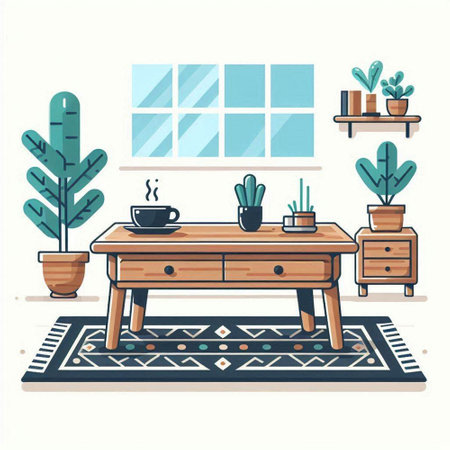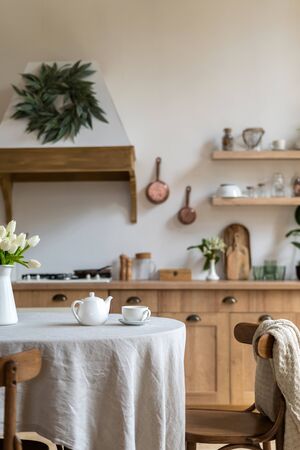Embracing the Charm of British Cottagecore
The British cottagecore aesthetic is a heartfelt nod to the timeless beauty of the countryside, weaving together nostalgia, simplicity, and a deep appreciation for nature. Rooted in rural British traditions, cottagecore invites us to slow down and relish the little moments—like brewing a proper cup of tea or gathering fresh herbs from the garden just outside the kitchen door. This design philosophy celebrates an unhurried pace of life, where every detail in your kitchen feels intentional and lovingly curated. Whether its the gentle patina of wooden worktops, vintage crockery on open shelves, or fragrant bundles of lavender drying by the window, a British garden-inspired cottagecore kitchen turns daily routines into rituals. It’s about welcoming the outdoors in, with floral patterns, botanical prints, and natural materials creating a seamless connection between home and garden. In embracing cottagecore, you’re not only designing a space—you’re nurturing a way of living that honours tradition, savours the present, and finds joy in everyday comforts.
2. Bringing the Outdoors In: Botanical Touches
If there’s one thing that defines a British garden-inspired cottagecore kitchen, it’s the effortless way nature finds its place indoors. Channel the atmosphere of an English woodland or country garden with botanical touches that feel as if they’ve wandered in from outside. Start by layering floral textiles—think classic chintz curtains, ditsy-printed tea towels, and seat cushions scattered with wildflower motifs. Choose patterns in gentle hues such as sage green, dusty rose, and soft buttercup yellow for that unmistakably British charm.
Everyday Greenery: Potted Herbs & Window Sills
No cottagecore kitchen is complete without living greenery. Line your window sills with terracotta pots brimming with fragrant herbs like rosemary, thyme, and mint—staples in both British gardens and kitchens. Not only do they lend a fresh scent and visual appeal, but they’re also within easy reach for everyday cooking.
| Herb | Classic Use | Visual Appeal |
|---|---|---|
| Rosemary | Roast meats, breads | Pine-like sprigs, robust green |
| Mint | Teas, puddings, salads | Bushy leaves, invigorating scent |
| Thyme | Soups, stews, stuffings | Tiny leaves, trailing stems |
| Sage | Savoury pies, stuffing | Soft grey-green leaves |
Natural Materials: The Foundation of Cottagecore Aesthetics
To truly evoke a British garden feel, opt for natural materials throughout your kitchen. Wooden worktops and open shelving create warmth and authenticity—choose oak or pine for their timeless appeal. Wicker baskets tucked under benches or hung from hooks are perfect for storing root veg or freshly picked apples from the garden. Don’t forget to incorporate earthenware pots and hand-thrown ceramics; these tactile touches ground the space in rustic simplicity.
Clever Storage Solutions Inspired by Nature
Keep your kitchen clutter-free yet charming by using vintage-style crates for potatoes and onions or hanging dried lavender bunches above the sink. These little details not only offer practical storage but also bring the sensory richness of a British cottage garden right into your home.

Classic Palette and Vintage Details
When channelling the spirit of a British garden-inspired cottagecore kitchen, colour is your first gentle invitation. Seek out hues that echo the calm and freshness of an English country garden: think soft sage greens reminiscent of mossy lawns, creamy whites like the delicate petals of climbing roses, and muted pastels reflecting forget-me-not blues or pale lavender. Layering these shades on walls, cabinetry, or even a freestanding larder instantly evokes a sense of serenity and nostalgia.
For an authentically British touch, incorporate vintage crockery—perhaps mismatched bone china teacups adorned with faded floral motifs, or hand-me-down serving platters edged in gold. Display them openly on sturdy wooden shelves or behind glass-fronted cabinets for daily enjoyment. Heirloom serveware, whether it’s a tarnished silver cake stand or an old stoneware mixing bowl, brings stories into your space—each piece whispering of family gatherings and long-lost recipes.
Time-honoured hardware such as brass knobs, ceramic drawer pulls, and wrought iron hooks complete the look. These tactile details offer a quiet reminder of craftsmanship from eras past. When you reach for a teapot or pull open a well-loved drawer, you’re not just organising your kitchen—you’re weaving daily rituals into the comforting fabric of home life. This classic palette paired with vintage treasures transforms your kitchen into a timeless retreat where every detail feels personal and lovingly curated.
4. Functional Yet Cosy Kitchen Layouts
Designing a British garden-inspired cottagecore kitchen is all about achieving that delightful blend of everyday practicality and inviting warmth. While the aesthetic draws from nostalgia and rustic charm, a kitchen still needs to serve modern lifestyles—whether you’re prepping a Sunday roast or just making a cuppa on a rainy afternoon. Here are some tips for crafting a kitchen layout that marries function with cosiness, ensuring your space feels both lived-in and efficiently organised.
Maximising Space: Classic Storage Solutions
Traditional British cottages often made clever use of every nook and cranny, so integrating similar storage ideas brings both authenticity and order to your kitchen. Think open shelving for displaying your favourite china, deep drawers for pans, and classic larders for dry goods. Freestanding dressers or hutches can be beautiful as well as practical, adding vertical storage without losing that homey touch.
| Feature | Cottagecore Storage Solution | Modern Touch |
|---|---|---|
| Pantry/Larder | Tall freestanding cupboard with wooden shelves | Pulled-out baskets for easy access |
| Open Shelving | Solid wood shelves displaying crockery & preserves | Integrated under-shelf lighting |
| Drawers & Cupboards | Painted shaker cabinets with cup handles | Soft-close mechanisms & organisers |
| Hooks & Rails | Copper or wrought iron rails for utensils & mugs | Magnetic knife strips or spice racks |
| Dresser/Hutch | Vintage piece for plates & cookbooks | USB charging station discreetly built in |
Zoning for Comfort and Efficiency
A cottagecore kitchen should flow naturally between cooking, dining, and simply pottering about. Designate areas for prep, baking, and socialising—perhaps an inviting window seat with garden views or a small breakfast table tucked into a sunny corner. If you’re tight on space, try a moveable butcher’s block or a fold-down table for extra worktop when needed.
Cosy Corners: Bringing in Softness
Add cushions to benches, hang gingham curtains, and layer in handwoven baskets for storing veg or fresh bread. Even the smallest kitchens can feel snug by including personal touches—a framed botanical print, vintage tins on the shelf, or potted herbs on the sill ready for snipping.
Tip: Let Function Guide Your Charm
While it’s tempting to focus solely on looks, always let function guide your choices. Group daily-use items within arm’s reach of the cooker; store less-used gadgets out of sight but easily accessible. With thoughtful planning, your British garden-inspired cottagecore kitchen will become a space where tradition meets today—effortlessly practical yet warmly inviting.
5. Personal Touches: British Craft and Local Finds
There’s something truly heartwarming about infusing your kitchen with unique pieces that tell a story, especially when they’re sourced from local British artisans or lovingly handed down through the generations. The charm of a garden-inspired cottagecore kitchen lies not just in its natural palette, but in the thoughtfully chosen details that reflect your personal journey and heritage.
Seek out whimsical décor and handmade kitchenware at local craft fairs or village markets—think hand-thrown pottery mugs glazed in soft sage, or delicately embroidered tea towels featuring wildflowers native to the British countryside. These pieces not only support local makers but also bring an authentic sense of place into your home. Don’t shy away from mixing vintage finds with modern-day crafts; pairing a weathered wooden breadboard found at a Cotswolds antiques market with freshly made ceramics creates a layered, lived-in feel.
Displaying family heirlooms is another way to add depth and nostalgia to your space. Perhaps you have Granny’s teapot or a collection of mismatched bone china cups tucked away—bring them out and let them shine on open shelving or nestled amongst herb planters on the windowsill. Their gentle patina and timeworn patterns evoke warm memories, making everyday rituals like brewing tea or baking scones all the more special.
If you love a good treasure hunt, explore local charity shops or car boot sales for one-of-a-kind items: brass candlesticks, hand-painted tins, enamel jugs, or floral-printed trays. Each discovery adds another layer to your cottagecore kitchen story, blending the past with the present in true British style.
Ultimately, these personal touches—whether crafted by skilled hands nearby or passed down through your own family—turn your kitchen into a meaningful sanctuary. They celebrate both community and memory, ensuring every meal prepared or cup of tea poured feels rooted in the comforts of home.
6. Seasonal Living: Year-Round Cottagecore Inspiration
One of the purest joys of a British garden-inspired cottagecore kitchen is its ability to ebb and flow with the rhythm of the seasons. Embracing this seasonal living isn’t just practical—it’s at the heart of what makes your kitchen feel truly lived-in and lovingly curated. Start in spring by dotting your windowsills with pots of cheery daffodils, fragrant hyacinths, or sprigs of fresh mint and chives; these bring life, colour, and that unmistakable sense of new beginnings right into your home. As summer arrives, fill vintage jugs with wildflowers picked from the hedgerow and keep bowls brimming with strawberries or gooseberries on the table for easy snacking.
When autumn rolls around, shift towards cosier textures and richer colours. Arrange bunches of dried lavender or wheat in stoneware pitchers, and line your shelves with jars of homemade chutney or apple preserves—proud reminders of late-summer bounty. Hang bunches of bay leaves or rosemary to dry above your cooker for both visual charm and everyday convenience. Come winter, let your kitchen glow with candlelight and rustic touches: think fir branches tucked behind picture frames, a bowl of clementines on the sideboard, and perhaps a tartan throw draped over a chair. If you’re lucky enough to have a hearth, gather pine cones and holly sprigs for a simple arrangement that celebrates nature even when the garden sleeps.
Adapting your cottagecore kitchen to the shifting British seasons doesn’t require a complete overhaul—just small, thoughtful changes that keep you connected to the landscape beyond your window. Rotate soft furnishings like seat cushions and tea towels in seasonally appropriate hues, swap out crockery displays to reflect the time of year, or simply open the back door to let in birdsong as you cook. These subtle shifts not only keep your space feeling fresh but also reinforce that sense of harmony between home and garden—a hallmark of true British cottage style.


